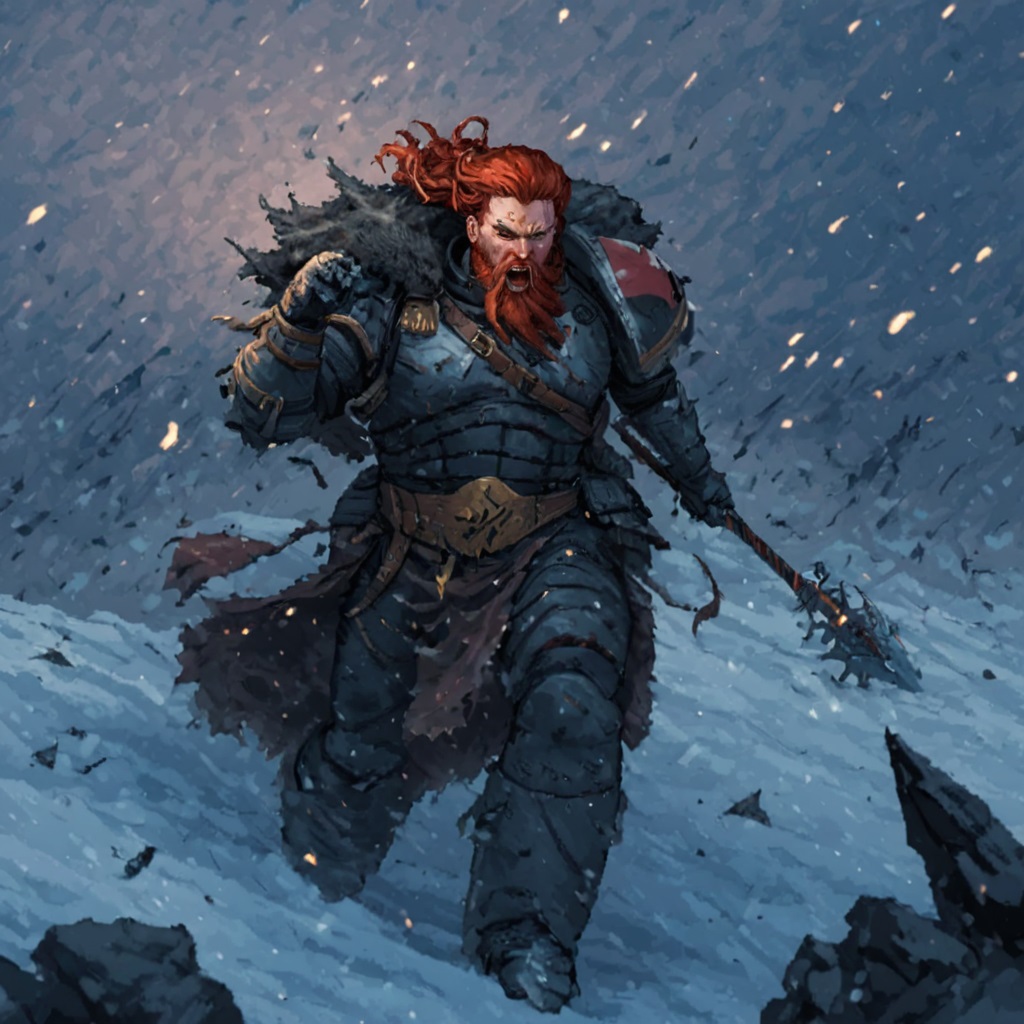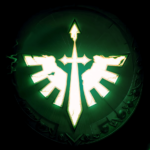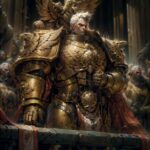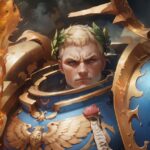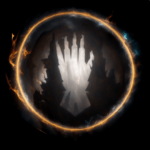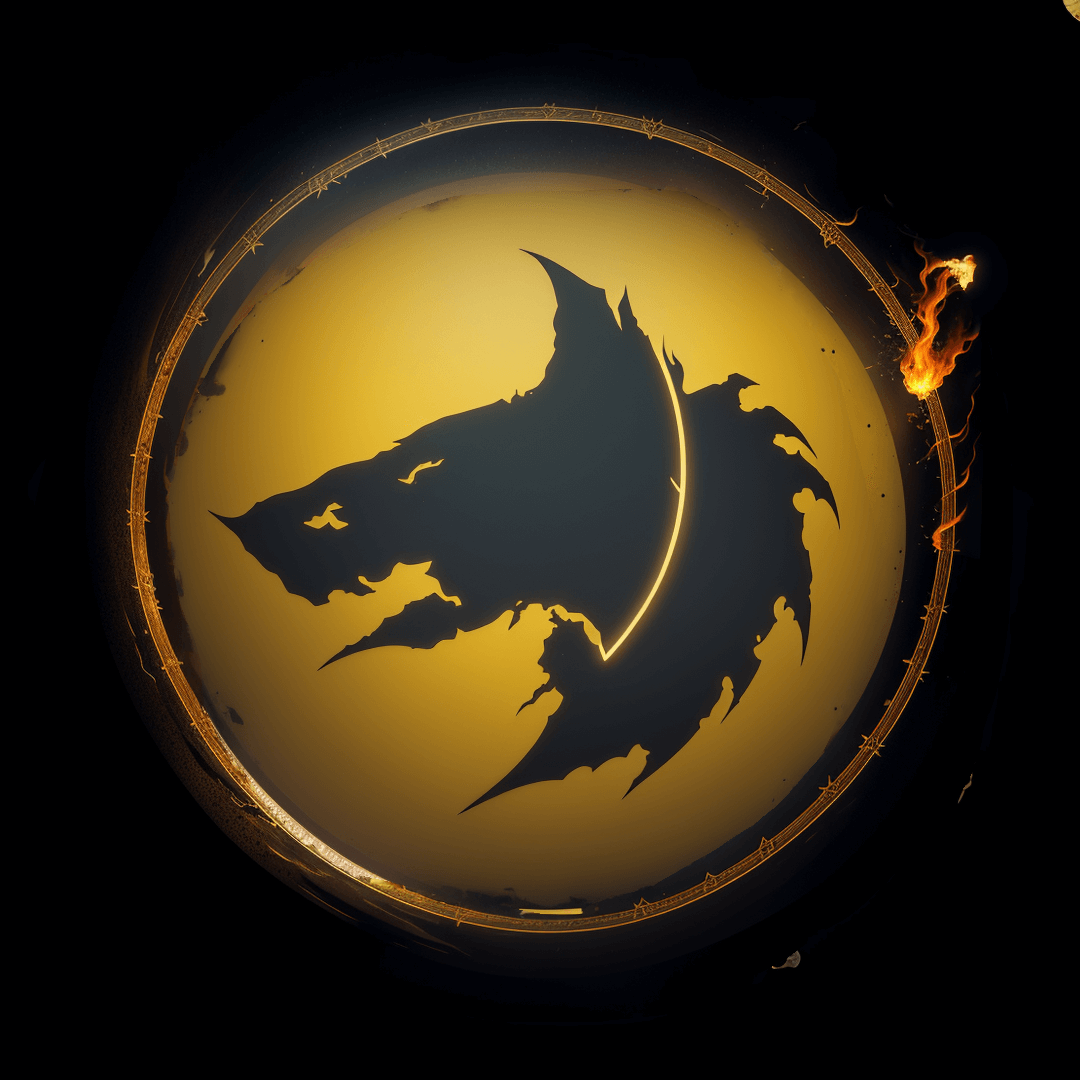
The Space Wolves: Sons of Fenris and the Emperor’s Executioners
The Space Wolves are one of the most distinct and recognizable Chapters of the Adeptus Astartes, known for their fierce independent streak, their embrace of their homeworld’s warrior culture, and their unorthodox organization and tactics.
Hailing from the unforgiving death world of Fenris, the Space Wolves have fought for millennia to defend the Imperium of Man from its many enemies.
Want to get started with your own Space Marine army? Checkout the Best Warhammer Starter Sets
Origins and the Great Crusade
The Space Wolves began as the VI Legion of Space Marines, created from the gene-seed of their Primarch Leman Russ. Even before Russ was found, the Legion had a reputation as a savage and hyper-violent force, used as the Emperor’s executioners and agents of fear against those who opposed the burgeoning Imperium.
They became known as ‘the Rout’, an unofficial moniker referring to their tendency to utterly destroy their foes.
This reputation was cemented when Leman Russ was discovered on Fenris, a world of ice and fire dominated by vicious predators and hardy tribes.
Russ had risen to become the king of his world through sheer combat prowess and force of will. Under his command, the VI Legion became the Space Wolves and fought at the forefront of the Great Crusade.
Key events during this period included the Wheel of Fire campaign, where the Space Wolves lost a significant portion of their veterans, and the Dulan Campaign where they fought alongside the Dark Angels Legion.
The Space Wolves built a reputation as the Emperor’s shock troops and executioners, and it was whispered that they may have been involved in the destruction of the two unknown Legions.
The Horus Heresy
When the Horus Heresy erupted and split the Legions, the Space Wolves stayed loyal to the Emperor. Leman Russ was ordered to take his Legion and censure the Thousand Sons primarch Magnus the Red for his use of forbidden sorcery.
In the resulting invasion of Prospero, the Space Wolves devastated the Thousand Sons and their homeworld, scattering the surviving Thousand Sons throughout the galaxy.
A contingent of the Space Wolves, led by the 13th Company, pursued the Thousand Sons into the Warp, beginning the legend of the 13th Company’s disappearance.
Meanwhile, the rest of the Legion was ambushed by the Alpha Legion and nearly destroyed before being rescued by the Dark Angels. Leman Russ vanished during the Heresy, leaving his Legion to carry on without him.
3D Printing is here! Get your 3D printer now, click here for The Best 3D Printers for Miniatures
Post-Heresy History
In the aftermath of the Horus Heresy, the Space Wolves rejected the reforms of the Codex Astartes, refusing to split their large Legion into the dictated Chapters.
Instead, the Space Wolves only grudgingly split into two Chapters – the new Space Wolves Chapter which retained the original name and organization, and the ill-fated Wolf Brothers who suffered from genetic instability and were later disbanded by the Inquisition.
Throughout the next ten millennia, the Space Wolves would remain a constant thorn in the side of the enemies of the Imperium. They fought in the Battle of Nadiak Gorge, the Proxima Rebellion, the Plague of Unbelief, and many other campaigns.
But their independent nature also brought them into conflict with other Imperial organizations, most notably during the “Months of Shame” incident with the Inquisition and the Grey Knights after the First War for Armageddon.
(Image Credit: Calgar)
Recent History
In recent millennia, the Space Wolves have been involved in many pivotal events. They fought in the Third War for Armageddon, were some of the first to encounter the reemergence of the Wulfen, and faced a daemonic incursion in the Siege of the Fenris System.
When the Great Rift tore the galaxy in half, the Space Wolves stood firm, incorporating Primaris Marines into their ranks to help fight the tide of chaos.
Weapons and Wargear
The Space Wolves are known for their distinctive wargear, much of which is influenced by the culture and traditions of Fenris. Some notable examples include:
- Frost weapons: Melee weapons like swords and axes that use rare Fenrisian crystals to generate an extremely cold field, capable of freezing enemies and shattering armor.
- Helfrost weapons: Rare and powerful ranged weapons that use the same Fenrisian crystal technology to fire devastating freezing projectiles.
- Wolf pelts and talismans: Many Space Wolves adorn their armor with pelts, teeth, and claws from Fenrisian wolves and other beasts, believed to impart strength and ferocity to the wearer.
- Wolf-themed vehicles: The Space Wolves’ vehicle pool includes unique designs like the Stormwolf and Stormfang gunships, designed to resemble the great wolves of Fenris.
Relationship with the Imperium
The Space Wolves’ independent streak and disregard for authority has often put them at odds with other Imperial organizations, despite their unwavering loyalty to the Emperor. This section could explore some of these key relationships, such as:
- The Inquisition: The Space Wolves have a deep distrust of the Inquisition, stemming from incidents like the Months of Shame where they felt the Inquisition overstepped its bounds.
- The Ecclesiarchy: As followers of their own Fenrisian traditions, the Space Wolves have little patience for the Ecclesiarchy’s religious doctrines and attempts to enforce them.
- Other Space Marine Chapters: While respected for their prowess, the Space Wolves’ disregard for the Codex Astartes and their boisterous, glory-seeking nature can cause friction with more orthodox Chapters. Their long-standing rivalry with the Dark Angels is particularly notorious.
Organization and Culture
The Space Wolves are divided into 12 Great Companies, with a lost 13th Company thought to have disappeared into the Eye of Terror. Each Great Company is led by a Wolf Lord and operates as an autonomous army with its own troops, vehicles, heraldry and spacecraft.
Unlike Codex Chapters, the Space Wolves do not have a Scout company, and their neophytes are inducted directly into the ranks of the Blood Claws assault troops.
As a Space Wolf survives battles and gains experience, he will advance to become a Grey Hunter, Long Fang, and eventually a member of the elite Wolf Guard. Specialist units like Wolf Scouts, Skyclaws, and Thunderwolf Cavalry support these main troops.
The Chapter as a whole is led by the Great Wolf, who is chosen from among the Wolf Lords. He is assisted by the upper echelons of the Chapter priesthood – the Rune Priests, who are the chapter’s spiritual leaders and psykers,
the Iron Priests who maintain the Chapter’s arms and equipment, and the Wolf Priests who oversee recruitment and genetic purity.
Space Wolf neophytes, after surviving a series of initiation rites, are inducted directly as Blood Claws, hot-headed assault troops. As they survive and gain experience, Space Wolves advance to become the tactical backbone of the Grey Hunters, heavy weapons specialists known as Long Fangs, and eventually the elite Wolf Guard.
Specialist units like Wolf Scouts, Skyclaws, and Thunderwolf Cavalry provide additional tactical flexibility.
The culture of the Space Wolves is deeply influenced by the warrior tribes of Fenris. The Chapter is notorious for its disregard for authority, preferring to follow the lead of its Wolf Lords and the Chapter Master, known as the Great Wolf.
They are boisterous, glory-seeking, and place great value on personal honor and combat prowess. This has often brought them into conflict with the more formal and strict Imperial organizations like the Inquisition and Ecclesiarchy.
Gene-seed and Successors
The genetic legacy of the Space Wolves is a unique and troubled one. Their gene-seed, which includes the unique Canis Helix sequence, gifts the Wolves with enhanced senses and aggression, but also carries the risk of the Wulfen curse, where Marines devolve into savage, wolf-like beasts.
For millennia, this instability prevented the Space Wolves from having any successful successors – the one attempt, the Wolf Brothers, ended in tragedy.
It was only with the dawn of the Ultima Founding and the arrival of the Primaris Marines that the Space Wolves gained stable successors like the Wolfspear.
Notable Campaigns and Battles
Throughout their long history, the Space Wolves have been involved in countless campaigns and battles. Some of the most notable include:
- The Burning of Prospero: The Space Wolves’ most infamous action during the Horus Heresy, where they were ordered to bring Magnus the Red to heel for his use of forbidden sorcery.
- The First War for Armageddon: The Space Wolves played a key role in defending Armageddon from the forces of Chaos, including a direct confrontation with the Daemon Primarch Angron.
- The Months of Shame: A dark period following the First War for Armageddon, where the Space Wolves clashed with the Inquisition and Grey Knights over the fate of the surviving civilian population.
- The Battle of Midgardia: A recent conflict where the Space Wolves defended their home system against a necron invasion led by the infamous Trazyn the Infinite.
- The Siege of the Fenris System: A massive Chaos invasion of the Space Wolves’ home system, led by Magnus the Red and his Thousand Sons, seeking revenge for their defeat at Prospero.
Famous Members
Many heroes have arisen from the ranks of the Space Wolves over the millennia. Some of the most renowned include:
- Leman Russ: Primarch of the Space Wolves, who led the Legion during the Great Crusade and Horus Heresy before disappearing into the Eye of Terror.
- Bjorn the Fell-Handed: The oldest living Space Marine, interred in a Dreadnought sarcophagus, who fought alongside Leman Russ during the Horus Heresy.
- Logan Grimnar: The current Great Wolf, who has led the Chapter for over 700 years and is considered one of the greatest Space Wolf leaders of all time.
- Ragnar Blackmane: A young and fierce Wolf Lord who rapidly rose through the ranks and has proven himself a capable leader and warrior.
- Ulrik the Slayer: The Space Wolves’ oldest Wolf Priest, a living legend within the Chapter known for his wisdom and prowess in battle.
Conclusion
The Space Wolves stand as one of the most distinctive and formidable Chapters of the Adeptus Astartes. Fiercely independent, bound to their Fenrisian heritage, and disdainful of authority, they are nonetheless a force that has time and again proven their loyalty and value to the Imperium.
From the Great Crusade to the 41st Millennium, the Sons of Russ have been a bulwark against the enemies of humanity, a fearsome and unrelenting force on the battlefields of the galaxy.
Their legacy is one of honor, courage, and unwavering dedication to the defense of the Imperium, no matter the cost.
Want to learn more about the Space Wolves? Head over to the Lexicanum for a much deeper dive!


